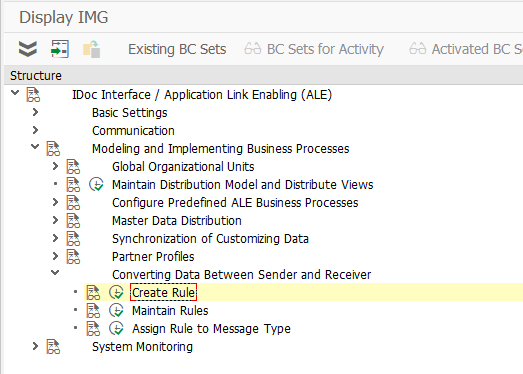What is SAP ALE?
SAP ALE – Application Link Enabling – data exchange technology, developed by SAP AG. It’s a technology because it has a set of tools, protocols, formats which allow exchanging data in real-time or offline between SAP or non-SAP systems. It’s a huge layer of settings, functionality, and opportunities which we rarely use. Let’s have a look at this stack and short SAP ALE configuration guide.
SAP ALE communication stack
CPIC – Common Programming Interface for Communication – low level communication protocol. You can read further here https://www-01.ibm.com/software/network/commserver/windows/library/cpic.htm
RFC – Remote Function Call – high level communication protocol to call remote functions
tRFC (transaction RFC) / qRFC (queued RFC) / aRFC (asynchronous RFC) / sRFC (synchronous RFC) – a way to deliver messages to the receiver with confirmation
IDOC – Intermediate DOCument / BAPI (Business Application Programming Interface) – message format
EDI – Electronic Data Interchange – data exchange procedure between SAP-nonSAP systems. International standard by chance.
ALE – Application Link Enabling – data exchange procedure between SAP-SAP.
Here is what I suggest you to discuss.
The CORE of SAP integration in SAP ALE layer
RFC – Remote Function Call, is a mechanism to call functions remotely. The idea is simple and works this way. We know some functionality exists on the remote server. ‘Hey, server, I know you have this function, I know the parameters. I want you to run it on my behalf but on your side Here is my authorization. Give me the result.’ Server spins hard drives and once it makes sure I’m not a little theft, it runs the requested function with my login. Any other program can run the same function on that same server locally. A checkbox in SE37 transaction makes the difference if it could be run remotely.
Read More
